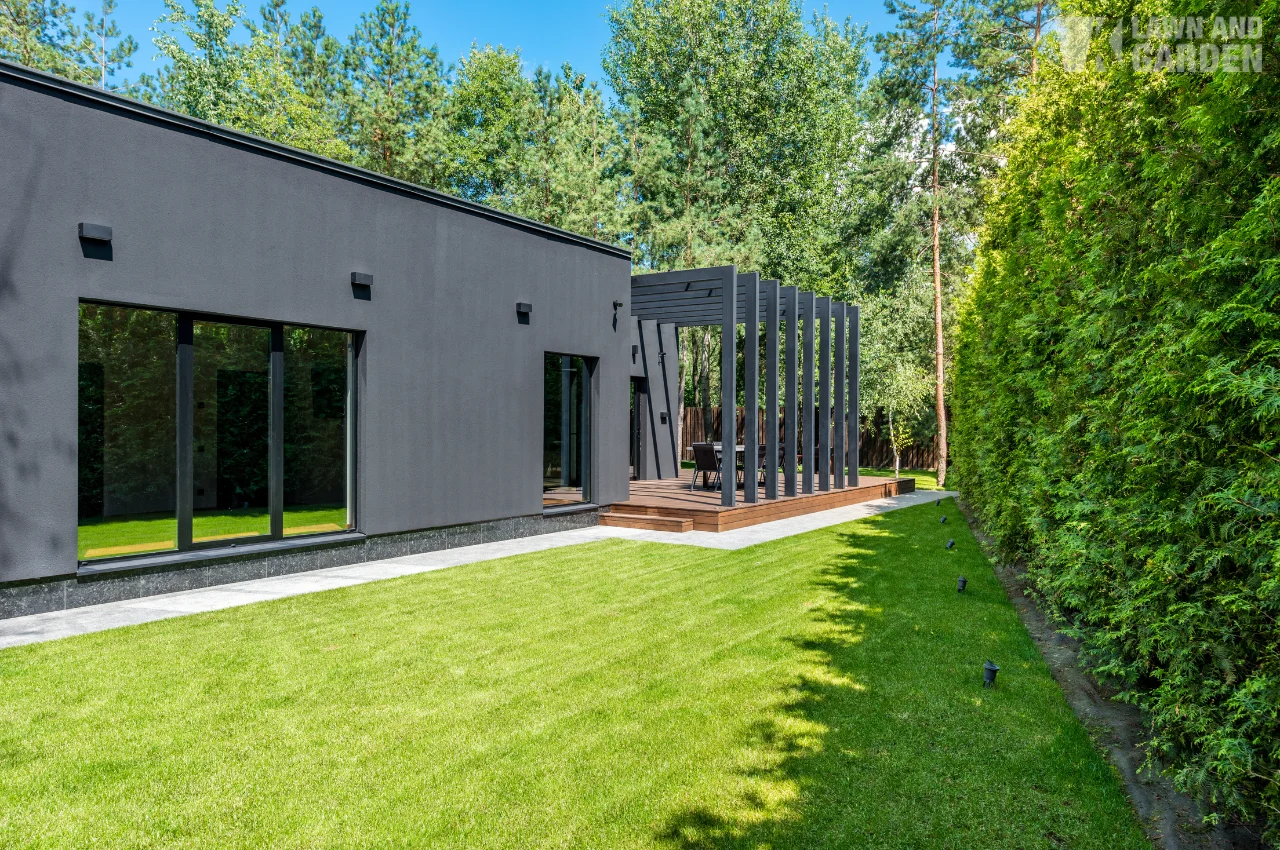Maintaining a tidy, green lawn in Wellington is more than just an occasional weekend chore. The region’s unique weather patterns, with frequent rainfall and varying temperatures, create specific conditions that require consistent upkeep. Many homeowners find that their lawns quickly become patchy, overgrown, or prone to weed infestations without proper attention.
These issues not only affect curb appeal but can also lead to long-term soil problems.
Professional lawn mowing services in Wellington help address these challenges efficiently.
By providing expert care tailored to local conditions, these services offer more than convenience—they support the health of the entire yard. From regular grass mowing to comprehensive garden maintenance, experienced lawn care teams use proven methods to keep residential properties looking neat and healthy throughout the year.
Key Lawn Care Techniques
Grass mowing best practices to promote growth and prevent lawn stress.

Proper grass mowing is key in encouraging growth and keeping the lawn in good shape. Many Wellington lawns feature a mix of cool-season grasses, which respond well to moderate, consistent cutting. It’s important to maintain an appropriate grass height—generally between 2.5 and 4 centimetres, depending on the variety. Cutting too short can stress the lawn, making it more vulnerable to pests, weeds, and diseases.
Instead of removing large amounts of grass in one session, following the “one-third rule” is more effective—never cut more than one-third of the grass height at a time. This practice supports healthy roots and prevents the lawn from becoming thin. Sharp mower blades are also essential, as dull blades tear the grass, leaving it prone to browning and fungal infections. Regular blade checks and scheduled maintenance help keep cutting clean and consistent.
The importance of watering schedules and fertilising to maintain soil health

Watering correctly is just as important as mowing. A lawn that receives too little water becomes dry and brittle, while one that is overwatered may develop shallow roots and encourage disease. In Wellington’s climate, lawns usually need about 25 millimetres of water per week. This should be spread over two or three sessions to promote more profound root growth. Early morning is the best time to water, as it allows the grass to absorb moisture before the sun becomes strong.
Fertilising complements watering by replenishing essential nutrients. A balanced fertiliser with nitrogen, phosphorus, and potassium can improve lawn colour, root strength, and resistance to stress. The timing of fertiliser applications matters—early spring and early autumn are ideal periods for cool-season grasses. It’s also helpful to test the soil periodically, as this helps determine whether extra nutrients or soil conditioners are needed.
Common lawn care mistakes that weaken the lawn
The key issue lies in neglecting balance across core maintenance areas—watering, mowing, and soil management.
Overwatering is one of the most common mistakes. While it may appear helpful, excess water restricts oxygen in the soil and creates conditions where fungus thrives. This weakens the grass and reduces root strength over time.
Mowing too short, also known as scalping, damages the grass by exposing the lower stem and soil to heat. This reduces the lawn’s ability to photosynthesise and makes it easier for weeds to take over.
Inconsistent mowing schedules also contribute to uneven growth, where some areas thicken while others become sparse, leaving the lawn looking patchy.
Ignoring soil health leads to compaction, which prevents water, nutrients, and oxygen from reaching the root zone. Even with regular mowing and watering, compacted soil restricts root development.
Skipping seasonal care—such as fertilising, aeration, and thatch removal—further limits the lawn’s ability to stay strong. A healthy lawn needs more than surface-level care. It depends on consistent attention to all parts of its ecosystem: grass, soil, and water.
How to maintain a lush lawn year-round
Keeping a lawn green and dense throughout the year involves more than mowing and watering. A regular care schedule that includes aeration, fertilisation, and weed control helps create the right environment for grass to thrive. Aerating the lawn once or twice a year relieves soil compaction and allows roots to access nutrients more efficiently.
Weed control should include both manual removal and preventative measures. Using pre-emergent herbicides in early spring helps reduce weed growth before seeds germinate. Spot treatments for persistent weeds, along with regular inspections, keep lawns clear without damaging the surrounding grass.
Consistent care prevents the need for harsh corrective measures later. A well-maintained lawn recovers more quickly from seasonal changes and remains healthy with less intervention.
Garden Maintenance for a Perfect Lawn
Lawn mowing frequency and cutting height
The frequency of mowing depends on the grass type and season. In Wellington, most lawns benefit from weekly or fortnightly mowing during the growing season, which spans from spring to early autumn. In cooler months, mowing can be reduced or paused, depending on growth rates.
Cutting height affects both appearance and health. Keeping grass slightly taller during dry spells helps reduce water loss. Taller blades also shade the soil, limiting weed growth and maintaining moisture levels. Changing the mowing pattern each time helps avoid compacting the soil in one direction and encourages upright growth.
What to do after mowing the lawn
Post-mowing tasks are often overlooked but help maintain lawn quality. Leaving small clippings on the lawn can return nutrients to the soil, though larger clumps should be raked to avoid smothering the grass. It’s a good time to inspect for weeds, pest damage, or uneven patches. These observations help identify problems early.
Watering after mowing supports regrowth, especially in dry conditions. It’s best to water lightly, allowing the lawn to absorb moisture without over-saturating. Checking mower blades and clearing grass from equipment also prepares for subsequent use.
Weeding and plant care for a healthy lawn environment
Unwanted weeds compete with grass for light, water, and nutrients. Early intervention is the most effective strategy. Hand-pulling small weeds is helpful when done regularly. For more widespread issues, selective herbicides that target broadleaf species can reduce invasion without harming turf.
Plants and shrubs in garden beds contribute to the lawn’s ecosystem by improving soil health and adding visual balance. They help stabilise borders, reduce erosion, and support insect biodiversity. Healthy garden plants also require appropriate watering and pruning, which complements overall lawn care routines.
Lawn Mowing vs. Full Lawn Care – What’s Best for Your Property?
Understanding the difference between mowing and complete care
Basic lawn mowing focuses solely on trimming the grass to a specific height. While it improves appearance in the short term, it doesn’t address soil conditions, weed growth, or seasonal needs. Complete lawn care includes a broader range of services—such as fertilisation, weed control, aeration, and dethatching—which work together to support long-term lawn health.
Complete care plans are designed to target specific problems and support different lawn types throughout the year. This approach helps maintain consistent colour, thickness, and resilience. For Wellington homeowners with busy schedules or larger properties, professional lawn mowing services offer a practical way to manage these tasks without missing key seasonal steps.
Lawn slicing as an aeration technique
Lawn slicing is one method of aerating the soil, particularly useful for compacted or high-traffic lawns. A slicing machine creates narrow slits in the ground, allowing water, oxygen, and nutrients to penetrate the soil more effectively. Unlike core aeration, which removes plugs of soil, slicing improves absorption while keeping the surface level relatively undisturbed. It works well in early spring or autumn when grass is actively growing.
What does an aeration lawn involve, and how does it help
An aeration lawn has been treated to relieve soil compaction. Aeration methods vary—core aeration, slicing, or spiking—all of which aim to improve airflow to the root zone. This process enhances nutrient uptake, encourages more profound root growth, and increases resistance to drought and disease.
Over time, aerated lawns grow more evenly, retain moisture better, and recover faster from mowing or environmental stress. Most lawns benefit from annual or biennial aeration depending on soil type and use patterns.
Hedge Trimming and Its Relation to Lawn Mowing
Why hedge trimming and lawn mowing should be done together

Trimming hedges and mowing the lawn at the same time saves effort and keeps the outdoor area looking well-maintained. Combining these tasks creates a consistent look and avoids scheduling overlaps. It also makes garden clean-up more straightforward, as clippings from both jobs can be collected in one session.
Regular hedge trimming shapes growth and prevents overhangs that can cast too much shade on the grass. Excess shade weakens lawn sections by limiting photosynthesis and increasing dampness, which encourages moss or mould.
How trimmed hedges improve property appearance
Well-kept hedges frame the lawn and improve the overall presentation of a garden. They define space, support privacy, and add structure to outdoor areas. Symmetrical trimming enhances the visual balance, especially along driveways, paths, or borders.
Neatly trimmed hedges complement a mowed lawn by drawing attention to clean lines and healthy grass. They also help create a polished appearance, which is especially useful for property managers or sellers preparing for viewings.
The distinct features of grass in lawn environments
Grass plays a unique role in garden ecosystems. It has self-repairing properties, which means it can recover from light damage such as foot traffic or minor drought. Certain species develop lateral growth, which naturally fills bare patches over time. Grass also adapts to different soil types and climates, making it versatile for a range of outdoor settings.
Beyond its practical benefits, grass improves air quality by capturing carbon dioxide and releasing oxygen. It helps cool the environment and stabilise soil, reducing erosion during heavy rain or wind.
Why Routine Mowing Isn’t Always Enough
A green, healthy lawn does not happen by chance. It takes regular care, attention to detail, and the proper techniques. For homeowners in Wellington, understanding the difference between routine mowing and comprehensive lawn care can help improve long-term results. From adjusting mowing height to managing weeds and improving soil conditions, each part plays a role in keeping lawns tidy and strong.
Hiring professional lawn mowing services in Wellington offers both time savings and consistent results. Whether you’re a busy homeowner or preparing a property for sale, reliable lawn care services can help maintain a neat, appealing outdoor space with less hassle.





